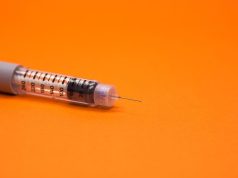Two trials show benefits for 150 mg subcutaneous secukinumab with IV, subcutaneous loading
WEDNESDAY, Dec. 23, 2015 (HealthDay News) — For patients with active ankylosing spondylitis, secukinumab is associated with reductions in symptoms at week 16, according to a study published in the Dec. 24 issue of the New England Journal of Medicine.
Dominique Baeten, M.D., from the University of Amsterdam, and colleagues conducted two phase 3 trials of secukinumab in patients with active ankylosing spondylitis. In MEASURE 1, 371 patients were randomized to intravenous secukinumab or matched placebo at weeks zero, two, and four, followed by subcutaneous secukinumab (150 or 75 mg) or matched placebo every four weeks. In MEASURE 2, 219 patients received subcutaneous secukinumab (150 or 75 mg) or matched placebo at baseline, weeks one, two, and three, and every four weeks starting from week four.
The researchers found that the Assessment of Spondyloarthritis International Society (ASAS20) response rates were 61, 60, and 29 percent for subcutaneous secukinumab at doses of 150 mg and 75 mg, and for placebo, respectively, at 16 weeks in MEASURE 1 (both P < 0.001 compared with placebo). The rates were 61, 41, and 28 percent for subcutaneous secukinumab at doses of 150 mg and 75 mg, and for placebo, respectively, in MEASURE 2 (P < 0.001 and P = 0.10, respectively, compared with placebo). Significant improvements persisted through 52 weeks.
“Secukinumab at a subcutaneous dose of 150 mg, with either subcutaneous or intravenous loading, provided significant reductions in the signs and symptoms of ankylosing spondylitis at week 16,” the authors write.
The study was funded by Novartis, the manufacturer of secukinumab.
Full Text (subscription or payment may be required)
Copyright © 2015 HealthDay. All rights reserved.








